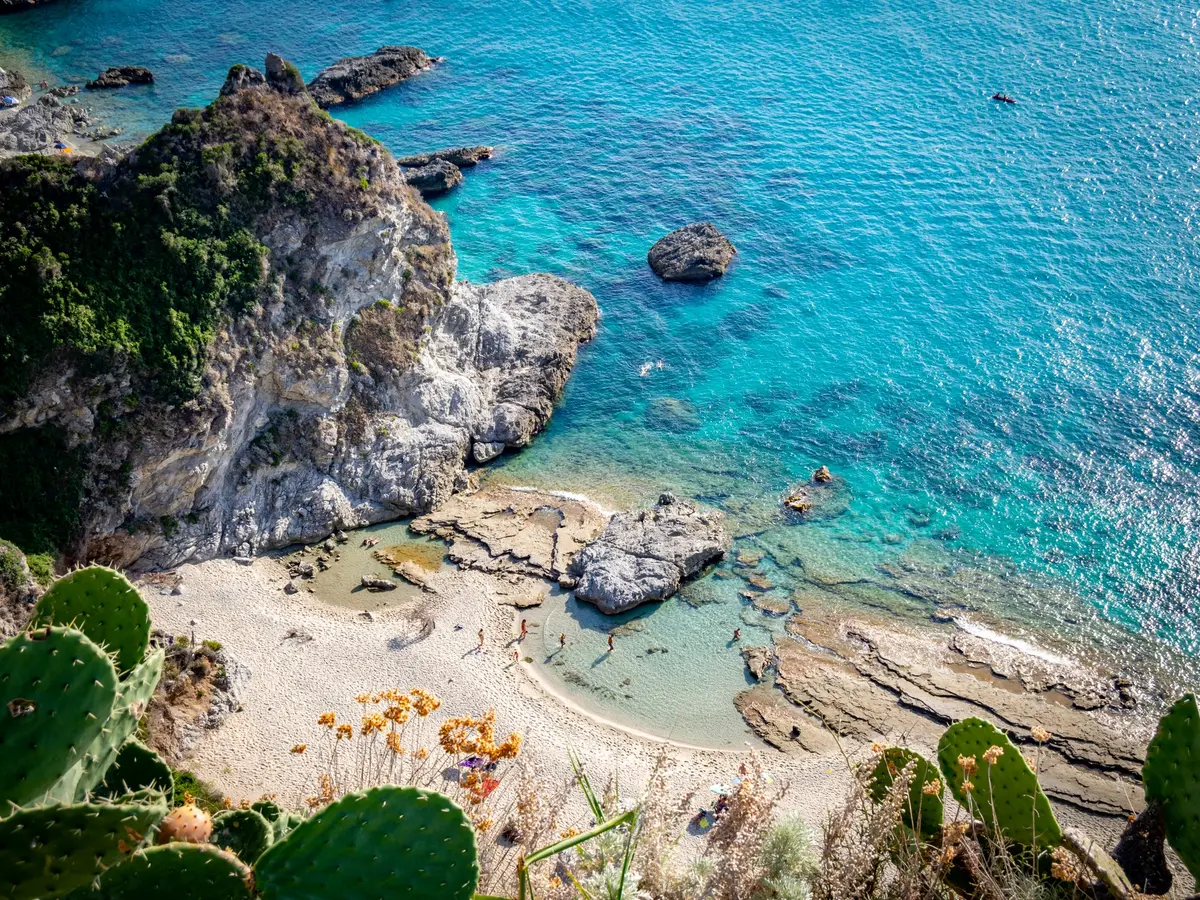Costa degli Dei, beaches and caves not to be missed
Itinerary on the Vibonese Tyrrhenian Sea, the beach of gods and heroes

Naturalistic
Capo Vaticano - Regione Calabria
Travel information
Category
Naturalistic
Target
For all
The itinerary along the Costa degli Dei Regional Marine Park, in the province of Vibo Valentia, is a Caribbean voyage through the stretch of the Middle Tyrrhenian Sea bordered by some of the most popular seaside resorts in Calabria, from Tropea to Capo Vaticano (Ricadi).
The main characteristic of the Costa degli Dei? The extraordinary variety of seascapes, alternating long stretches of fine, golden beaches with breathtaking cliffs that plunge into the sea, between which caves open up or small villages, sanctuaries, lighthouses and Saracen towers rise.
A true spectacle of nature that gazes at the fiery sunsets over the Aeolian Islands and, not surprisingly, according to legend, was home to the Greek gods who came to bathe in these waters to maintain their eternal youth.
Behind, the Mount Poro massif offers the bright green of the Mediterranean maquis and the sea-mountain proximity that characterises the entire region. The itineraries along the Costa degli Dei easily lead from the beaches to the forests, passing through the towns of the inland areas to discover historical-archaeological gems such as the ancient Rupestrian Village of Sbariati (Zungri), also known as the small "Calabrian Petra".
The inland villages offer the opportunity to taste two gastronomic "musts" of the Costa degli Dei, which in addition to the famous Red Onion of Tropea PGI offers the unfailing 'Nduja of Spilinga and the delicious Pecorino of Monte Poro PDO.

Pizzo

Briatico

Zambrone

Tropea

Ricadi




